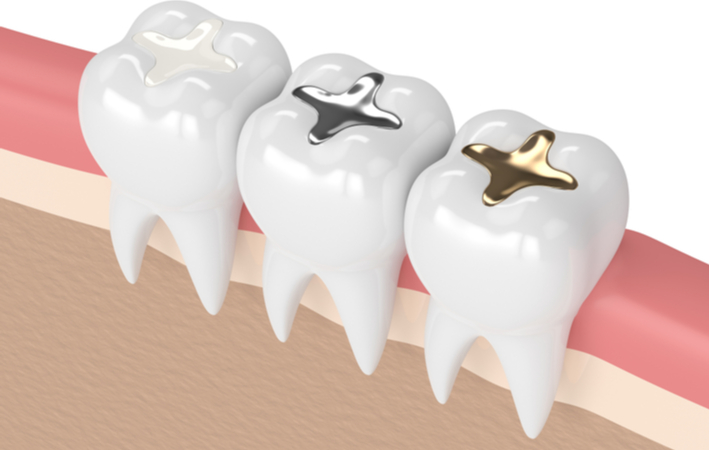If you need a dental filling to fill a cavity, there are various options for different needs, preferences, and budgets. Your dental filling material will depend on what your dentist recommends, as well as what material you’re most comfortable with.
Silver (Amalgam) Fillings
Silver or amalgam fillings are made from an alloy that contains a number of different metals. Typically, silver fillings will be 35% silver, 50% mercury, and 15% copper, tin, and other metals. Some patients are concerned about the mercury that silver fillings contain, but the amount found in fillings is widely-regarded as safe.
Silver fillings are the most common filling type in Canada, given its use for over 150 years as a filling material. They’re strong and inexpensive, although the advancement of other filling materials is causing the popularity of silver fillings to decrease.
Glass Ionomer Fillings
Glass ionomer fillings are made from acrylic and a component of glass, either fluoroaluminosilicate or calciumaluminofluorosilicate. This unique filling material forms a chemical bond with the tooth and releases fluoride to help prevent future cavities or worsening tooth decay.
However, glass ionomer is the weakest filling material and is only recommended for very specific applications. Typically, this material is only used on baby teeth, on the necks of teeth, or as a liner for other filling types. In some cases, it can be used as a temporary filling until a stronger, more permanent filling can be placed.
Composite Resin Fillings
Also known as plastic or white fillings, composite fillings are made from plastic and fine glass particles. Powdered glass quartz, silica, or other ceramic particles are added to a resin base to form the filling.
This filling material is white in colour, giving it a more natural appearance. And with material advancements, composite resin fillings can be placed in most areas of the mouth for small to mid-sized fillings.
Gold Fillings
Gold fillings are made from a mixture of metals including gold, silver, and copper. Gold alloy is seen as the best filling material as it is malleable while still being strong enough to handle chewing forces.
The main reasons patients choose materials other than gold for fillings are cost and aesthetics. Gold is the most expensive filling material and many don’t like how gold fillings look.

Porcelain Fillings
Lab-made porcelain has improved greatly over the years and today porcelain fillings can be placed in almost any area of the mouth. Porcelain-metal hybrid fillings can also be used in areas that need stronger fillings, like molars.
The main downside to porcelain fillings is the cost. While they have the benefits of being strong and tooth-coloured, porcelain fillings are one of the most expensive filling materials.
The Right Dental Filling for You
Your dentist will work with you to determine which filling material is right for you. They will make a recommendation based on the size and location of the filling. The cost and appearance of the filling are additional factors you will likely want to consider and discuss with your dentist.
If you think you might be in need of a dental filling, contact us today. It’s important to have cavities filled sooner rather than later, to help prevent further decay and the need for more involved dental work like crowns or implants. We’ll be happy to discuss the pros and cons of all filling materials to help you make an informed decision about your dental health.








